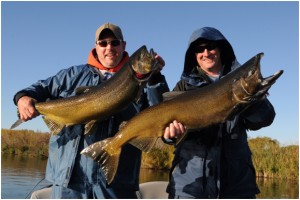Some days, we cast and hook up on seemingly every cast. Other days, it’s like we’re casting in a dessert, expecting to hook into a camel. Fishing. Why do we do it—well, I think we have to be optimists to get ourselves out the door. Sure, fishing in a dessert is part of the game, but we, as anglers all hope for those days of “stupid fishing”, when no matter what we do, or how we do it, we get bites. Those are the fun days, no doubt about it! And they’re also the days that our arms get tired from catching, and not just fishing. That being said, however, these are also the days to not only enjoy to the fullest, but to learn.
It’s during a hot bite that I experiment with off-the-wall ideas to see whatever else works. Not only does this eliminate dud ideas, but can help hone techniques and bait presentations, giving us confidence in these techniques when we encounter the dreaded tough bite days.
Such was the case the past several days. Most of July and August, we here in northern Michigan, experienced very little rain, leading to extremely clear, low water conditions. The past 2 weeks has had a lot of rain. In fact, the past week has had well over 6 inches of rain, leading to very high, muddy flood-stage water levels on all of the area’s rivers. The Big Manistee River was no exception.
Higher water levels on the rivers in the fall lead to fish such as salmon and steelhead to enter the rivers to spawn. Low clear water, by contrast, makes fish wary, and makes the spawning runs meager and not as predictable. High muddy water makes fish a little more predictable, but not necessarily any easier to catch.
The past few guide trips on the Manistee River has been like trying to fish in hot chocolate. Muddy, lots of leaves and debris floating down river, and fish on the move up to Tippy Dam. Under normal conditions, the steelhead that come into the river in October stage in various holes and runs as they meander their way up to the dam, where they spawn. High, muddy water forces fish out of their typical routine, keeping them on the move. As anglers, high muddy water must force us out of our typical routines as well, making us fish water that we might not typically, looking for the shallower runs that fish use as they move up river.
The bite was extremely tough during the highest water. Most tactics didn’t get a lot of bites, but we did manage a few. By putting the right presentations in front of inactive fish, we were able to get a few to react positively. Whether it was out of hunger, curiosity or aggression—at the end of the day, it doesn’t really matter—we got some bites. But paying attention to cues that the conditions give us can help trigger some of these bites.
Rich and David with early morning late-season king salmon. We have no idea if the early bird got the worm, but these anglers got the fish!





